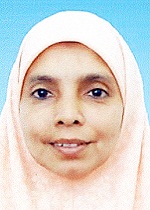A Study of Innovative Class Imbalance Dataset Software Defect Prediction Methods
Keywords:
Abstract
Data mining for software defect prediction is the best approach for detecting problematic modules. On-hand classification methods can speed up knowledge discovery on class balance datasets. Actual facts are not balanced since one class dominates the other. These are class imbalances or skewed data sources. As class imbalance increases, the fault prediction rate decreases. For class imbalance data streams, the suggested algorithms use unique oversampling and under-sampling strategies to remove noisy and weak examples from both the majority and minority. We test three techniques on class imbalance software defect datasets using four assessment measures. Results indicate that class-imbalanced software defect datasets can be solved.
References
Bodepudi, A., Reddy, M., Gutlapalli, S. S., & Mandapuram, M. (2019). Voice Recognition Systems in the Cloud Networks: Has It Reached Its Full Potential?. Asian Journal of Applied Science and Engineering, 8(1), 51–60. https://doi.org/10.18034/ajase.v8i1.12 DOI: https://doi.org/10.18034/ajase.v8i1.12
Gutlapalli, S. S. (2016a). An Examination of Nanotechnology’s Role as an Integral Part of Electronics. ABC Research Alert, 4(3), 21–27. https://doi.org/10.18034/ra.v4i3.651 DOI: https://doi.org/10.18034/ra.v4i3.651
Gutlapalli, S. S. (2016b). Commercial Applications of Blockchain and Distributed Ledger Technology. Engineering International, 4(2), 89–94. https://doi.org/10.18034/ei.v4i2.653 DOI: https://doi.org/10.18034/ei.v4i2.653
Gutlapalli, S. S. (2017a). Analysis of Multimodal Data Using Deep Learning and Machine Learning. Asian Journal of Humanity, Art and Literature, 4(2), 171–176. https://doi.org/10.18034/ajhal.v4i2.658 DOI: https://doi.org/10.18034/ajhal.v4i2.658
Gutlapalli, S. S. (2017b). The Role of Deep Learning in the Fourth Industrial Revolution: A Digital Transformation Approach. Asian Accounting and Auditing Advancement, 8(1), 52–56. Retrieved from https://4ajournal.com/article/view/77
Gutlapalli, S. S. (2017c). An Early Cautionary Scan of the Security Risks of the Internet of Things. Asian Journal of Applied Science and Engineering, 6, 163–168. Retrieved from https://ajase.net/article/view/14
Gutlapalli, S. S., Mandapuram, M., Reddy, M., & Bodepudi, A. (2019). Evaluation of Hospital Information Systems (HIS) in terms of their Suitability for Tasks. Malaysian Journal of Medical and Biological Research, 6(2), 143–150. https://doi.org/10.18034/mjmbr.v6i2.661 DOI: https://doi.org/10.18034/mjmbr.v6i2.661
Mandapuram, M. (2016). Applications of Blockchain and Distributed Ledger Technology (DLT) in Commercial Settings. Asian Accounting and Auditing Advancement, 7(1), 50–57. Retrieved from https://4ajournal.com/article/view/76
Mandapuram, M. (2017a). Application of Artificial Intelligence in Contemporary Business: An Analysis for Content Management System Optimization. Asian Business Review, 7(3), 117–122. https://doi.org/10.18034/abr.v7i3.650 DOI: https://doi.org/10.18034/abr.v7i3.650
Mandapuram, M. (2017b). Security Risk Analysis of the Internet of Things: An Early Cautionary Scan. ABC Research Alert, 5(3), 49–55. https://doi.org/10.18034/ra.v5i3.650 DOI: https://doi.org/10.18034/ra.v5i3.650
Mandapuram, M., & Hosen, M. F. (2018). The Object-Oriented Database Management System versus the Relational Database Management System: A Comparison. Global Disclosure of Economics and Business, 7(2), 89–96. https://doi.org/10.18034/gdeb.v7i2.657 DOI: https://doi.org/10.18034/gdeb.v7i2.657
Mandapuram, M., Gutlapalli, S. S., Bodepudi, A., & Reddy, M. (2018). Investigating the Prospects of Generative Artificial Intelligence. Asian Journal of Humanity, Art and Literature, 5(2), 167–174. https://doi.org/10.18034/ajhal.v5i2.659 DOI: https://doi.org/10.18034/ajhal.v5i2.659
Mandapuram, M., Gutlapalli, S. S., Reddy, M., Bodepudi, A. (2020). Application of Artificial Intelligence (AI) Technologies to Accelerate Market Segmentation. Global Disclosure of Economics and Business 9(2), 141–150. https://doi.org/10.18034/gdeb.v9i2.662 DOI: https://doi.org/10.18034/gdeb.v9i2.662
Reddy, M., Bodepudi, A., Mandapuram, M., & Gutlapalli, S. S. (2020). Face Detection and Recognition Techniques through the Cloud Network: An Exploratory Study. ABC Journal of Advanced Research, 9(2), 103–114. https://doi.org/10.18034/abcjar.v9i2.660 DOI: https://doi.org/10.18034/abcjar.v9i2.660
Desuky, A., S., & Hussain, S. (2021). An Improved Hybrid Approach for Handling Class Imbalance Problem. Arabian Journal for Science and Engineering, 46, 3853– 3864. https://doi.org/10.1007/s13369-021-05347-7 DOI: https://doi.org/10.1007/s13369-021-05347-7
Ge, J., Liu, J. and Liu, W. (2018). Comparative Study on Defect Prediction Algorithms of Supervised Learning Software Based on Imbalanced Classification Data Sets. 2018 19th IEEE/ACIS International Conference on Software Engineering, Artificial Intelligence, Networking and Parallel/Distributed Computing, 27-29 June 2018, Busan, 399-406. https://doi.org/10.1109/SNPD.2018.8441143 DOI: https://doi.org/10.1109/SNPD.2018.8441143
Song, Q., Guo, Y. and Shepperd, M. (2018). A Comprehensive Investigation of the Role of Imbalanced Learning for Software Defect Prediction. IEEE Transactions on Software Engineering, 1. https://doi.org/10.1109/TSE.2018.2836442 DOI: https://doi.org/10.1109/TSE.2018.2836442
Chang, R.H., Mu, X.D. and Zhang, L. (2011). Software Defect Prediction Using Non-Negative Matrix Factorization. Journal of Software, 6, 2114-2120. https://doi.org/10.4304/jsw.6.11.2114-2120 DOI: https://doi.org/10.4304/jsw.6.11.2114-2120
Alsawalqah, H., Faris, H., Aljarah, I., Alnemer, L. and Alhindawi, N. (2017). Hybrid Smote-Ensemble Approach for Software Defect Prediction. In: Silhavy, R., Silhavy, P., Prokopova, Z., Senkerik, R. and Oplatkova, Z., Eds., Software Engineering Trends and Techniques in Intelligent Systems, Springer, Berlin, 355-366.
https://doi.org/10.1007/978-3-319-57141-6_39 DOI: https://doi.org/10.1007/978-3-319-57141-6_39
Aleem, S., Capretz, L. and Ahmed, F. (2015). Benchmarking Machine Learning Technologies for Software Defect Detection. International Journal of Software Engineering & Applications, 6, 11-23.
https://doi.org/10.5121/ijsea.2015.6302 DOI: https://doi.org/10.5121/ijsea.2015.6302
Song, G. and Ye, Y. (2014). A Dynamic Ensemble Framework for Mining Textual Streams with Class Imbalance. Scientific World Journal, Article ID 497354. https://doi.org/10.1155/2014/497354 DOI: https://doi.org/10.1155/2014/497354
Downloads
Published
How to Cite
Issue
Section
License
Copyright (c) 2021 Asian Journal of Applied Science and Engineering

This work is licensed under a Creative Commons Attribution-NonCommercial 4.0 International License.








